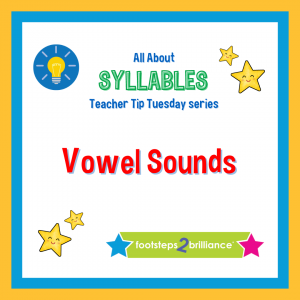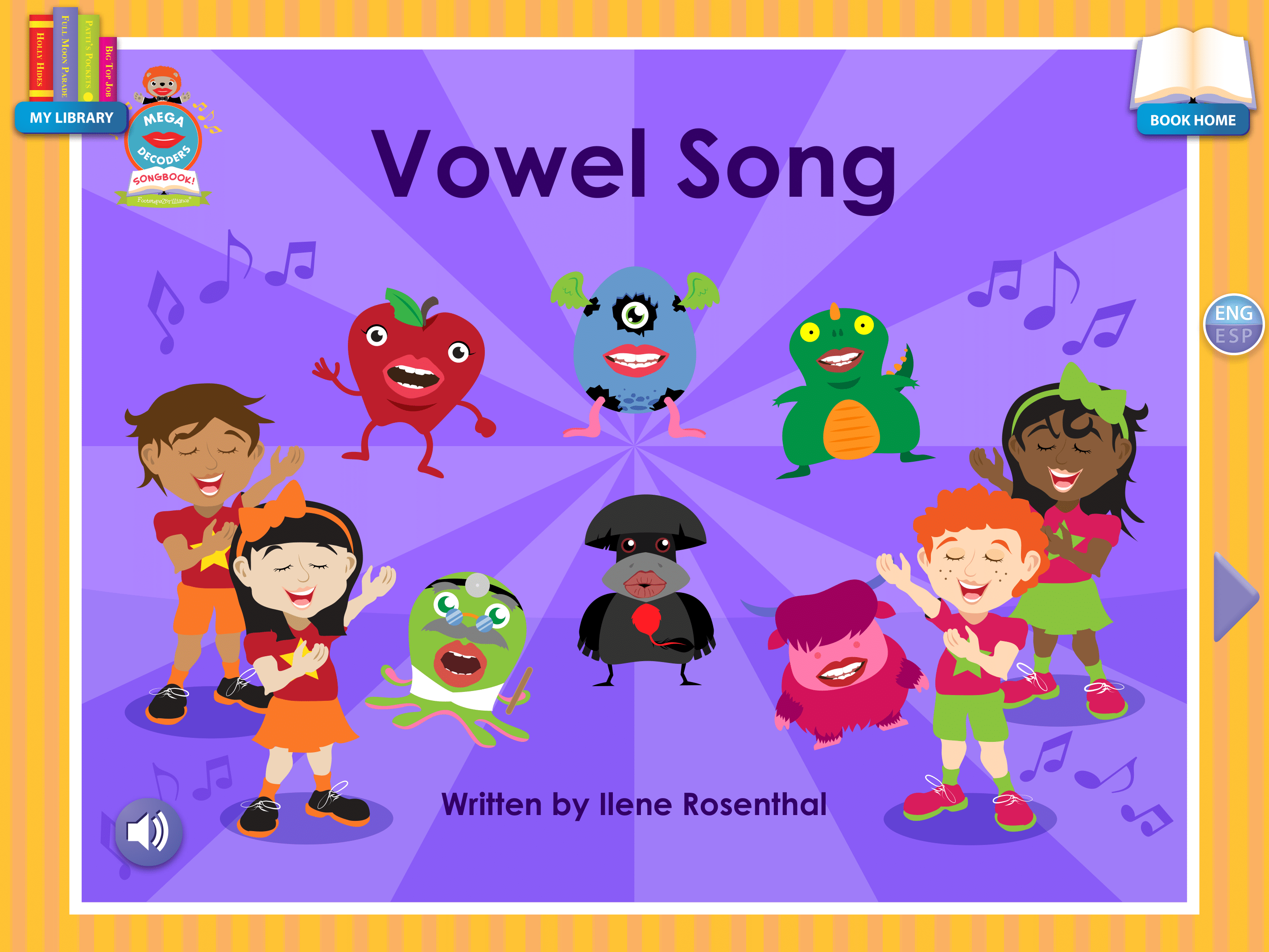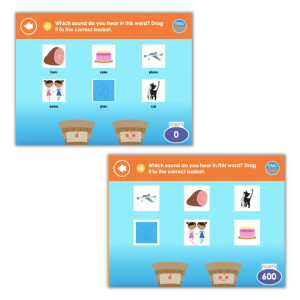Vowels are the building blocks of syllables. Students need to understand which letters are vowels before they can break words into syllables. In addition, students need to know the difference between long and short vowel sounds. In this week’s Teacher Tip Tuesday, we discuss ways to teach the vowels and their sounds to set students up for success in understanding syllables.
Syllables are defined by vowel sounds. The number of syllables in a word can be determined by counting the number of vowel sounds it contains.

We say short vowel sounds quickly, like the a in “cat.” Closed syllables have short vowel sounds. Here are a few more examples:

A long vowel makes the same sound as the letter’s name. For example, the long A sound is said “ay,” like the letter A is pronounced. You might teach students that a long vowel is “saying its own name.” Open syllables have long vowel sounds, but there are other ways to make a long vowel sound.

The letter Y is a consonant. However, if found at the end of a word, it acts as a vowel by making the “ee” sound. Teaching students to identify the letter Y as a vowel in these instances will help them divide syllables properly.

Remember to start with sounds
We all know that spelling in English doesn’t always line up with the way the word sounds. This is very true for vowel sounds. The long i sound (“aye”) can be spelled i_e, igh, ie, or even eye!
Before getting to spelling, help students learn which letters are vowels. Teach them what short and long vowel sounds are. Practice hearing and using vowel sounds in different ways.
Join us each week as we cover the scope and sequence for teaching syllables!
Looking for more Teacher Tip Tuesday content? Click here for the Effective Strategies for Teaching English Learners series, complete collection.
Not signed up? To learn how to provide your class with access to the Footsteps2Brilliance bilingual literacy program, click here, or sign up to speak to a Footsteps2Brilliance expert here.








